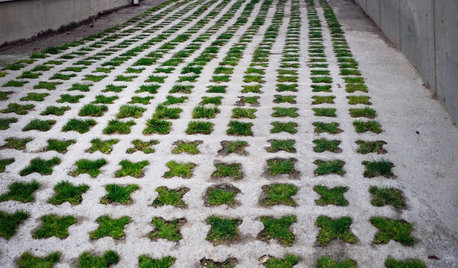Estimated water output from sprinker system at park?
lou_spicewood_tx
15 years ago
Related Stories

BUDGETING YOUR PROJECTConstruction Contracts: What to Know About Estimates vs. Bids
Understanding how contractors bill for services can help you keep costs down and your project on track
Full Story
BATHROOM DESIGNWater Damage Spawns a Space-Saving Bathroom Remodel
A game of inches saved this small New York City bathroom from becoming too cramped and limited
Full Story
REMODELING GUIDESGet What You Need From the House You Have
6 ways to rethink your house and get that extra living space you need now
Full Story
GREAT HOME PROJECTSHow to Switch to a Tankless Water Heater
New project for a new year: Swap your conventional heater for an energy-saving model — and don’t be fooled by misinformation
Full Story
LANDSCAPE DESIGNLandscaping Tricks to Manage Stormwater Runoff
Help rainwater absorb slowly back into the earth with paving grids, gravel beds and other porous systems
Full Story
GREAT HOME PROJECTSHow to Add a Solar Water Heater
Lower energy bills without a major renovation by putting the sun to work heating your home’s water
Full Story
GREEN BUILDINGHouzz Tour: Going Completely Off the Grid in Nova Scotia
Powered by sunshine and built with salvaged materials, this Canadian home is an experiment for green building practices
Full Story
LANDSCAPE DESIGNCalifornia Says Goodbye to the Sprawling Ornamental Lawn
New state rules will effectively limit turfgrass to 25 percent of the landscape in most new and renovated yards
Full Story
GREAT HOME PROJECTSHow to Replace Your Lawn With a Garden
New project for a new year: Lose the turfgrass for energy savings, wildlife friendliness and lower maintenance
Full Story
EARTH DAYHow to Build a Greener Driveway
Install a permeable driveway to keep pollutants out of water sources and groundwater levels balanced
Full Story







lehua49
all_wet
Related Professionals
Fort Lee Landscape Architects & Landscape Designers · Mountain Brook Landscape Architects & Landscape Designers · Brookside Landscape Contractors · Bowie Landscape Contractors · Coeur d'Alene Landscape Contractors · Damascus Landscape Contractors · Davis Landscape Contractors · Forest Hills Landscape Contractors · La Verne Landscape Contractors · Lees Summit Landscape Contractors · Milford Landscape Contractors · Rockland Landscape Contractors · Vallejo Landscape Contractors · Golden Valley Landscape Contractors · Vadnais Heights Landscape ContractorsMichael
lehua49
hookoodooku
lou_spicewood_txOriginal Author
lehua49